SIMPLE. PRACTICAL. TRUSTED.
SECTION 05
ANIMAL CARE


VBP+ PRODUCER
REFERENCE MANUAL


SIMPLE. PRACTICAL. TRUSTED.



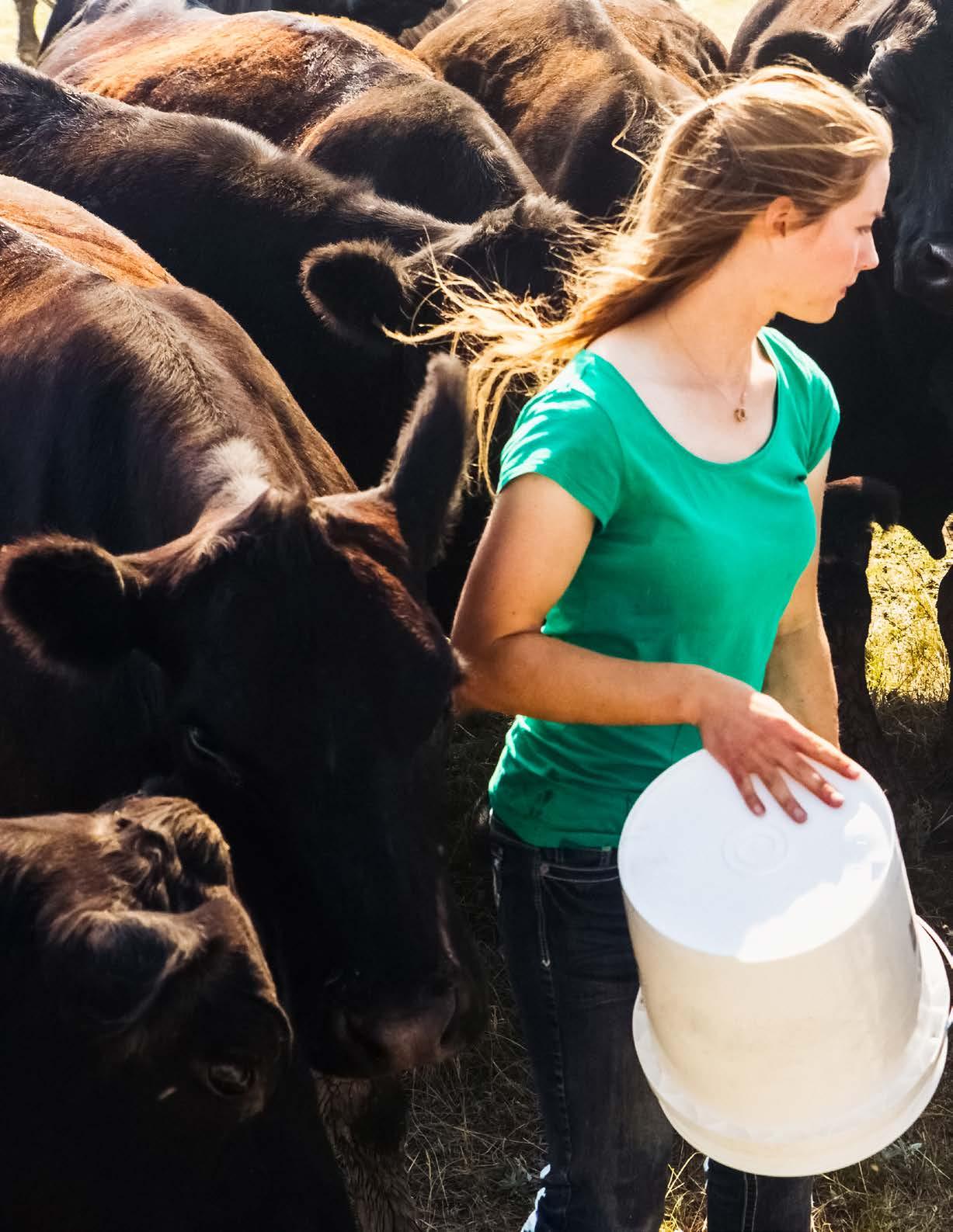
The Cana dian beef industry involves seedstock and cow-calf producers, backgrounding and feedlot operations, transporters, sale yards and assembly stations, veterinarians, and packing plants—all of which operate under diverse climatic and geographical conditions. Cattle husbandry can look different between management systems, but the general principle of animal welfare is consistent: providing the necessities of life for live stock.
Cattle require the following:
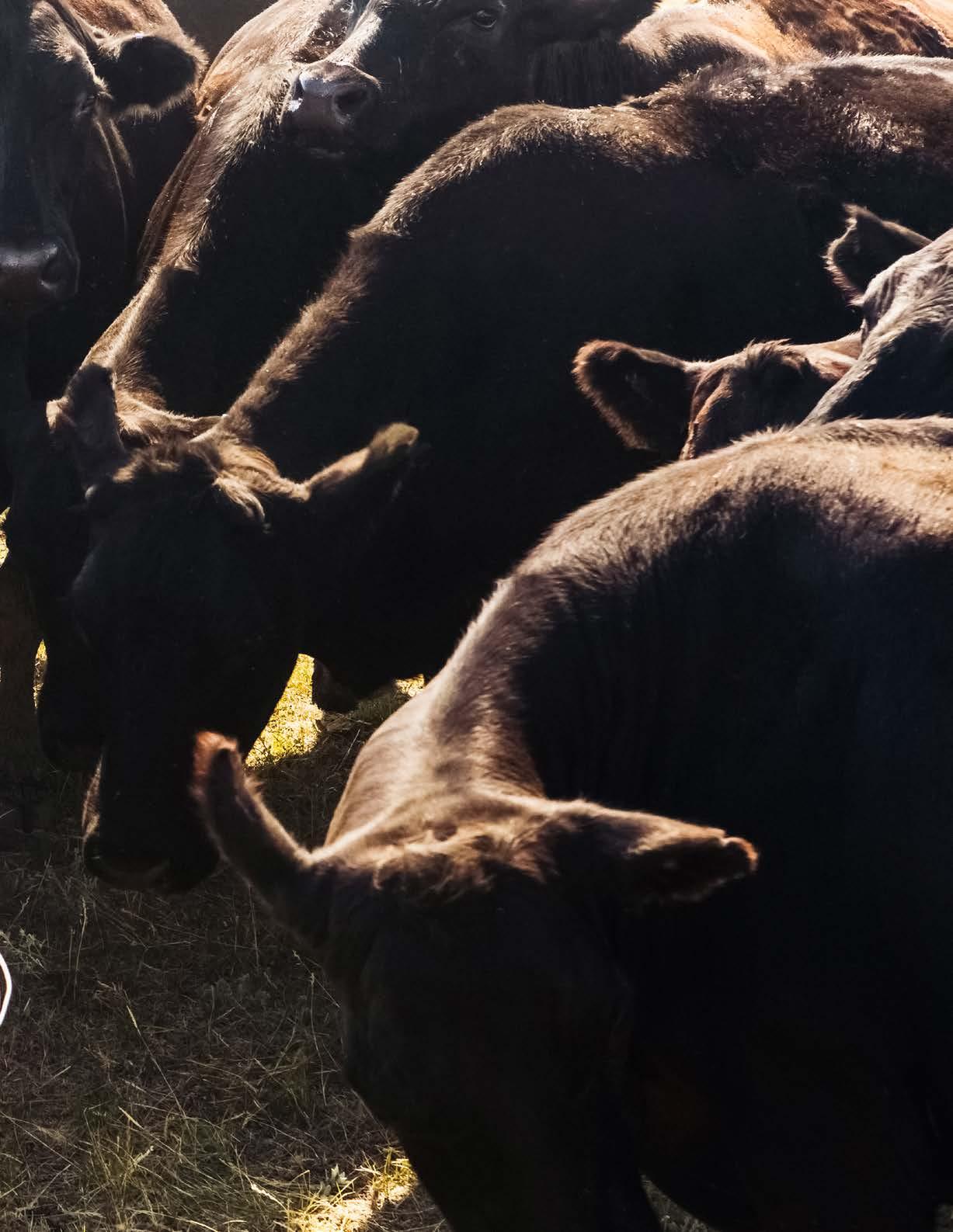
Shelter for protection and comfort
Feed and water to maintain optimal health
Freedom of movement, exercise, and opportunity to express normal behaviours
Company of herd mates
Footing that reduces the risk of slipping or falls
Disease prevention and control
Veterinary care, diagnosis and treatment
Freedom from unnecessary pain and discomfort
Emergency preparedness for fire, mechanical breakdowns, and the disruption of feed supplies
Animal safety and welfare are a priority, and continual improvement is sought in this area.
Providing nourishment, comfort, and humane handling to livestock maximizes animal health, productivity, and meat quality. The general public is also becoming more interested in the well-being of livestock. Through the VBP+ program, cattle producers can demonstrate their commitment to animal care.
VBP+ follows the best-practices outlined in the Code of Practice for the Care and Handling of Beef Cattle. Developed by the National Farm Animal Care Council (NFACC), the Code of Practice is available from the Canadian Cattlemen’s Association or online. Each operation should have a hard-copy or digital version of this document on-site.
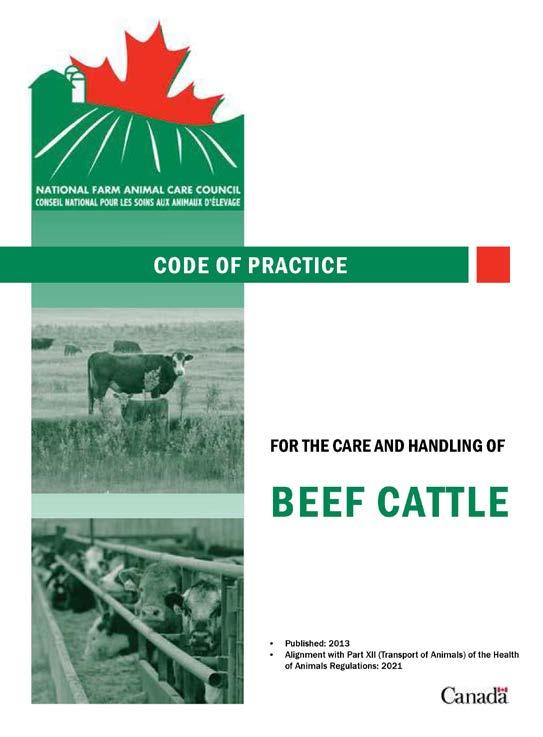
The Code of Practice includes two types of practices: required and recommended.
REQUIRED PRACTICES refer to either a regulatory requirement or an industry-imposed expectation outlining acceptable and unacceptable practices, and are fundamental obligations relating to the care of animals. Requirements represent a consensus position that these measures, at minimum, are to be implemented by all persons responsible for farm animal care. When included as part of an assessment program, those who fail to implement requirements may be compelled by industry associations to undertake corrective actions or risk a loss of market options. Requirements may also be enforceable under federal and/or provincial regulation.
RECOMMENDED PRACTICES may complement the Code’s requirements, promote producer education, or encourage adoption of practices for continuous improvement in animal welfare outcomes. Failure to implement a recommendation does not imply that acceptable standards of animal care are not met.
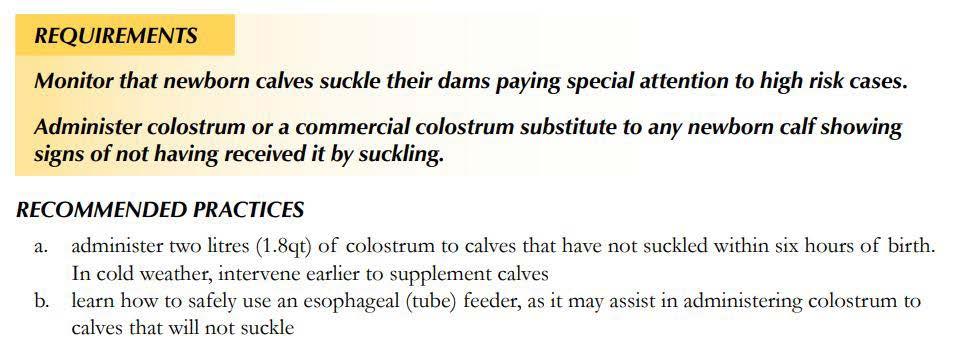 The image below shows an example of how the Code of Practice differentiates between Requirements and Recommended Practices. Requirements are highlighted in yellow, while Recommended Practices are not highlighted.
The image below shows an example of how the Code of Practice differentiates between Requirements and Recommended Practices. Requirements are highlighted in yellow, while Recommended Practices are not highlighted.
Cattle handling is the management of cattle movement in various situations, including gathering or moving animals through a series of pens, alleys, or restraining devices. During these activities, cattle can panic and are more prone to injury. The goal is to minimize stress and ensure safety for both cattle and humans. This can be accomplished by animal handlers familiar with cattle behaviour, using quiet handling techniques in facilities designed to encourage cattle flow and animal safety (i.e.: no sharp corners, shadows, gaps).
All beef cattle operations should have access to equipment or facilities for the safe handling, restraint, treatment, segregation, loading, and unloading of cattle. Cattle facilities should be maintained to provide adequate traction and be free of hazards that may cause injury. Restraint devices should be checked regularly to ensure proper function; for example, excessive pressure can cause unnecessary discomfort. Try to minimize noise and distractions from handling equipment.
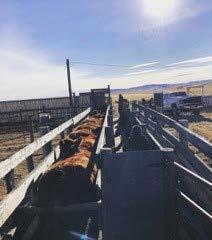
There is less risk of injury to both animals and handlers when cattle are moved quietly and calmly. Be aware of cattle behaviours, herd instincts, flight zones, points of balance, and possible reactions to wind, noise, sudden movements, light contrast, or shadows. Tools, such as flags, electric prods, and trained dogs, should be used prudently to encourage cattle movement.
Electric prods are only appropriate in situations where the animal has a clear path to move away; as a last resort when all other humane alternatives have failed, or when animal or human safety is at risk. Electric prods should be used sparingly, and never on the genitals, face, udder or anal areas of the animal. Calves less than 3 months old that can be moved manually should also not be subjected to electric prods. Similarly, when stock dogs are used to work cattle, they should be suitably trained and in the handler’s control at all times.
Mistreatment or intentional harm of cattle is unacceptable. This includes, but is not limited to: beating animals, repeated use of electric prod on the same animal, slamming gates on animals, allowing herd dogs to keep pushing cattle with nowhere to move, and dragging or pushing cattle with machinery (unless to protect animal or human safety). Willful acts of neglect or abuse are regulated at the provincial and federal level and producers are encouraged to have a zero-tolerance policy for mistreatment.
Check out local bylaws for moving cattle on roads and highways. Producers should take into consideration weather conditions, such as heat, humidity, cold, or icy road conditions, when driving cattle.
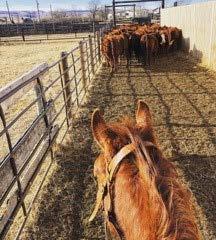
Producers are encouraged to explore, define and implement handling procedures using principles of animal behavior that mitigate risk. Undesirable consequences include broken legs, broken necks, broken noses, equipment damage, and human injury. An equal standard of humane treatment must be provided to cattle that have less economic value (i.e. cull cows, downers, and chronically ill cattle).
Operations are expected to have adequate human resources for proper animal care. Handlers must be familiar with cattle behaviour (through training, experience, or mentorship) and have knowledge to minimize stress and avoid unnecessary suffering of cattle. Any staff training, coaching, or mentoring should be documented and outcomes recorded.
It is worthwhile to note that transportation after cattle leave the farm-gate is often beyond the control of the producer. However, it is the responsibility of the producer that animals be fit for transport prior to loading. Producers are expected to comply with all applicable laws, regulations, and associated requirements that relate to transportation. More detail is provided in Section 7: Transportation.
Adjust your handling techniques and positioning according to the response of the animals and the situation
Take a course in cattle handling techniques
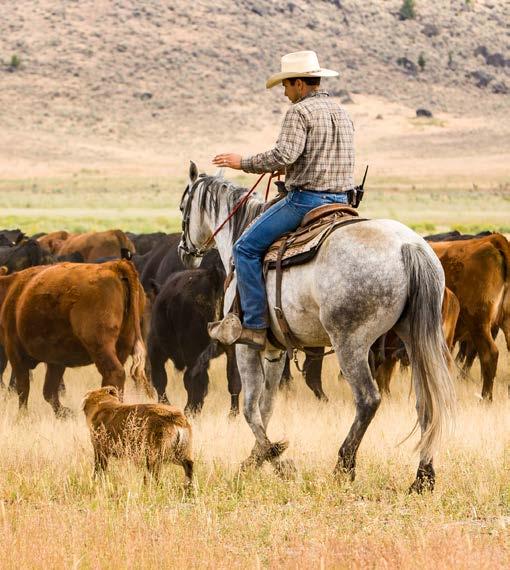
Use handling tools such as flags, plastic paddles or rattles, to direct animal movement
Evaluate your cattle handling techniques regularly and make improvements to them as needed. Factors to consider include the percentage of cattle:
o Falling (belly or torso touches the ground) during handling
o Stumbling or tripping (knee contacts ground) after being released from the chute
o Requiring the use of electric prods to move
o Running or jumping when leaving the chute
o Vocalizing as a result of constraint
Increasing levels of the above handling events may indicate a need for changes in lighting, noise level, equipment, handling methods, or environment.
Feedlots and cow/calf operations over 5,000 head must demonstrate competency during an on-farm audit evaluation.
Lack of understanding of methods of restraint or handling important to mitigate risk for unnecessary pain and suffering to animals, human injury or broken needles.
Awareness of the issues and reason for concern with animal care and use of restraint for mitigation of broken needles but not being adopted across the operation with consistency. Code of Practice for Handling of Beef Cattle is available on operation for reference.
Awareness and adoption of policies related to animal care, use of restraint for mitigation of broken needles and requirements of the Code of Practice are understood and adopted. Consistency in execution is a goal for the operation.
Complete development and adoption of policies and protocols related to animal care and use of restraint for mitigation of broken needles with documentation of execution of protocols, training of personnel, records of pain mitigation activities and/or investigations and resolution of non-compliances.


Some management practices that ensure animal health and safety can create stress, pain, and discomfort. Cattle stress should be minimized to ensure efficient processing and reduce the risk of broken needles, injection site damage, dark cutters, and injury to animals and workers.




Animal care and animal health are integrated in many ways and it is vital that producers have a valid VCPR. A veterinarian may prescribe pain medications and provide advice on how to perform necessary procedures. To help lessen the effect of painful procedures, specific management practices are encouraged to be performed when cattle are at a young age.


When cattle require hands-on treatment, they should be restrained securely to allow handlers to administer medications in a safe manner for both people and the animal. This is especially important to reduce the incidence of broken needles and tissue damage due to injection site lesions.
There are several methods that producers can use to securely restrain cattle:
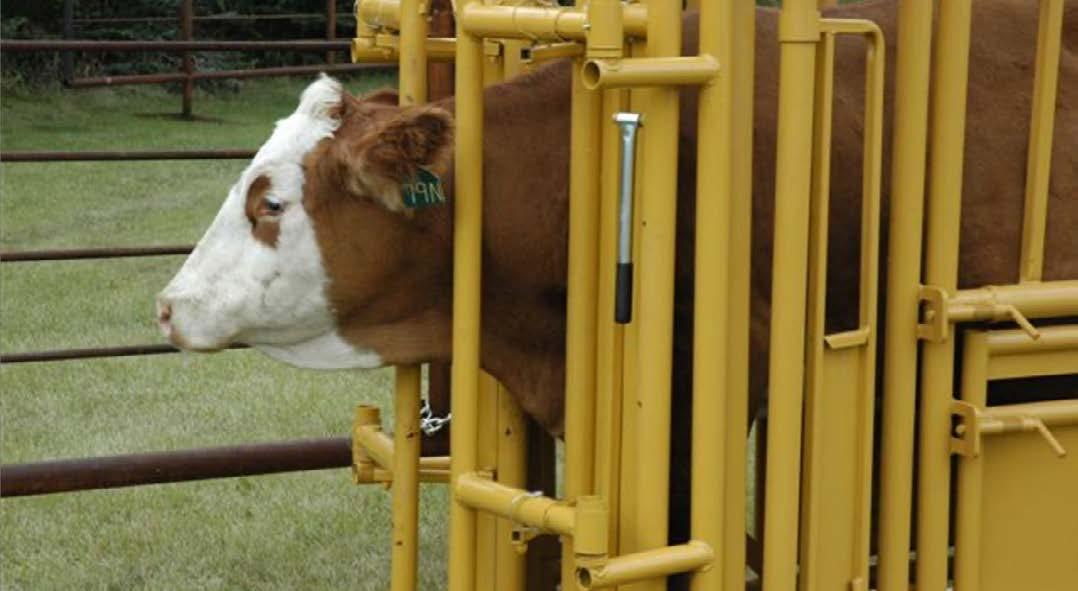
Squeeze chute and/or neck extender
Hold on ground, wrestle, or Nord Fork
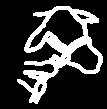
Calf tipping table
Roping in a pasture situation
Cattle should be restrained for only as long as necessary to complete the work required. For many procedures the animal must be fully immobolized for the safety of the animal and the handlers.
Note: Proper restraint and immobilization of the animal will reduce incidences of bent or broken needles and improper dosage. It is critical that after each injection, the delivery device is inspected. If the needle is not attached or cannot be found on the ground, a suspected broken needle event must be recorded. Similarly, if using a dart gun, check each dart after it falls out of the animal to ensure the needle is intact. The animal automatically becomes a suspected broken needle carrier if the needle is missing or you can’t find the dart.
No awareness of the need to restrain and immobilize cattle when working on individual cattle for the safety of people and cattle and to reduce broken needle incidence.
Awareness of the need for proper animal restraint to minimize risk of broken needles, but inconsistent adoption of animal restraint techniques and inspection of delivery equipment.
Animal restraint methods are used and inspection of delivery equipment is consistently used throughout the operation.
Animal restraint methods are used and inspection of delivery equipment is consistently used throughout the operation. Written protocol is in place to mitigate the risk of broken needles; records of investigations and changes in management.
Branding is used as a means of permanent identification. Brands provide proof of ownership and easy identification of an animal from a distance, and may be required in some situations (i.e.: community pastures, remote locations, for export, by some lending institutions).
There are generally two types of branding: hot-iron and freeze-branding. Both methods cause acute short-term pain and stress. Producers can minimize the impact by implementing the following techniques:
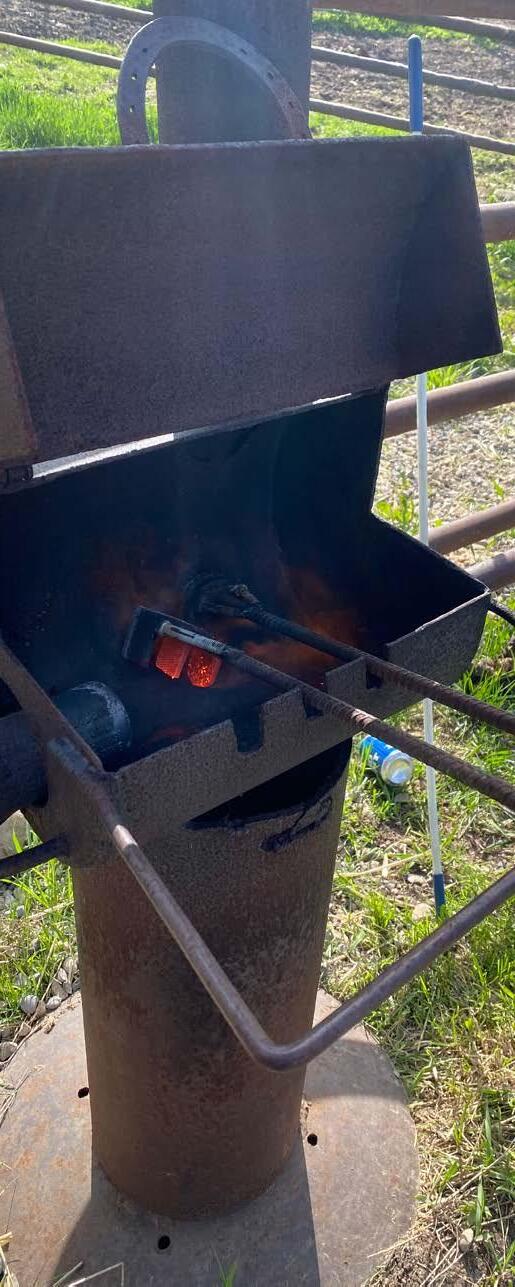
Restraining and immobilizing the animal
Matching the size of branding iron to the animal
Not branding cattle that are wet
Using equipment that is in good working order
Consulting with a veterinarian regarding the feasibility of pain control medication at branding
Only people that are knowledgeable and properly trained should apply brands. Brands must be registered with provincial brand inspection agencies and can be placed on the shoulder, rib, or hip. Face branding is not legal in Canada. Whenever possible, consider replacing branding and surgical alterations of cattle (such as wattling or earsplitting) with less invasive identification practices.
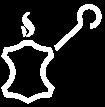
No awareness that branding procedures should be performed under specific conditions. (dry hide, appropriate size and location of brand , suitable equipment, experience and training).
Branding is performed; no regard for appropriate pain mitigation.
Branding is performed with a focus on minimizing animal pain and distress; pain mitigation used.
Branding is not performed on operation; OR written records for use of pain mitigation and protocol for training competent personnel.
The horns of beef cattle are routinely removed to decrease the risk of injuries to workers and other animals, and to minimize economic losses due to carcass bruising. The proportion of beef cattle with horns has steadily decreased with increased availability and adoption of polled (hornless) genetics. Most common beef breeds have polled lines available, and the use of homozygous polled genetics eliminates the need for disbudding or dehorning.
Disbudding refers to the removal of the horn bud before attachment to the skull. The age of horn attachment varies, but is usually between 2-3 months of age. Techniques for
removing horn buds include: removing the horn buds with a knife, thermal cauterization of the horn buds with an electric butane-powered or hot disbudding iron, or the application of chemical paste to cauterize the horn buds. Disbudding involves less tissue trauma.
Dehorning refers to the removal of the horn after attachment to the skull. Methods of dehorning include cutting or sawing the horn close to the skull, sometimes followed by cauterization to stop the bleeding. Disbudding and dehorning both cause pain and distress to cattle. Your veterinarian may provide methods of pain relief for use during and after horn removal.
Producers are encouraged to eliminate the need to dehorn animals by either utilizing polled genetics, or by disbudding calves as early as possible. If young cattle are left to develop horns, avoid dehorning at the time of weaning to reduce stress, ensure vaccinations are up-to-date, and consult your veterinarian. Pain control medication must be administered when dehorning AFTER horn bud attachment.
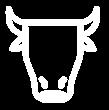
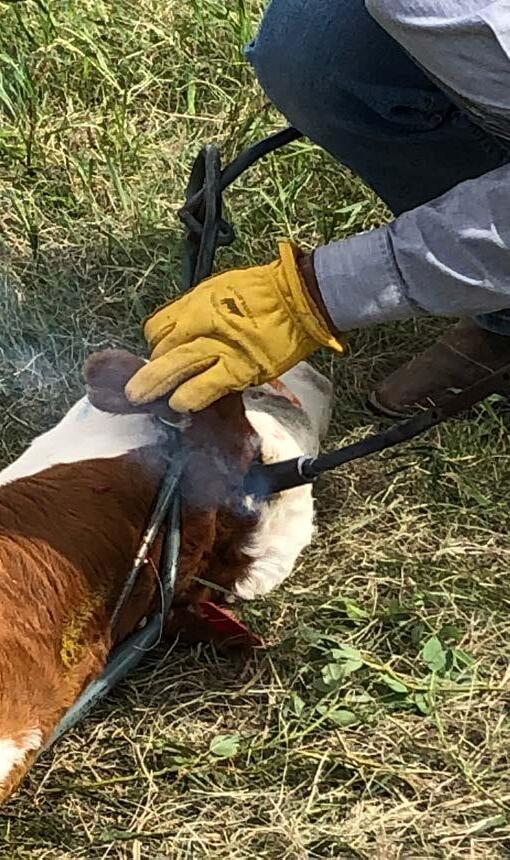
Disbudding and dehorning must be done by competent personnel, using proper tools and accepted techniques. Competency is defined as trained and experienced personnel.
Awareness of implications of pain during dehorning process. Gaining knowledge of early disbudding procedures or pain mitigation during dehorning.
Able to articulate processes used for early disbudding or use of pain mitigation for dehorning processes or operation has policies to only dehorn for medical purposes (broken or ingrown) using pain mitigation.
Written protocols, using veterinarian consultation, around use of pain mitigation for dehorning processes with documentation for validation, or operation uses genetics to eliminate need for disbudding or dehorning.
Castration prevents unwanted reproduction, reduces aggression towards humans and other cattle, and improves meat quality. Castration is performed using either surgical (knife) or non-surgical methods (i.e.: burdizzo, elastrators/ banding).
Castration should be performed by skilled personnel, using clean, well-maintained instruments and accepted techniques. Improper castration can be ineffective, or cause complications such as infection, excessive bleeding, or death. “Belly bulls” have one testicle trapped against the abdomen. This is caused when young calves are improperly castrated with bands: only one (or neither) testicle is captured below the band. These cattle will still exhibit bull characteristics, and the testicle(s) will require more complicated surgical removal later.
All methods of castration cause pain and distress, which can be minimized if done as early as possible. Early castration increases operator safety and reduces the duration of the procedure because the calves are smaller and more effectively restrained. Pain control methods should be discussed with your veterinarian.
Effective January 1, 2018, the NFACC Code of Practice requires the use of pain control when castrating bulls older than six months of age.
Code of Practice recommended castration procedures:

Consult your veterinarian about pain mitigation strategies
Avoid castration at the time of weaning to reduce stress
When castrating weaned cattle, use banding to reduce the risk of excessive bleeding and for operator safety
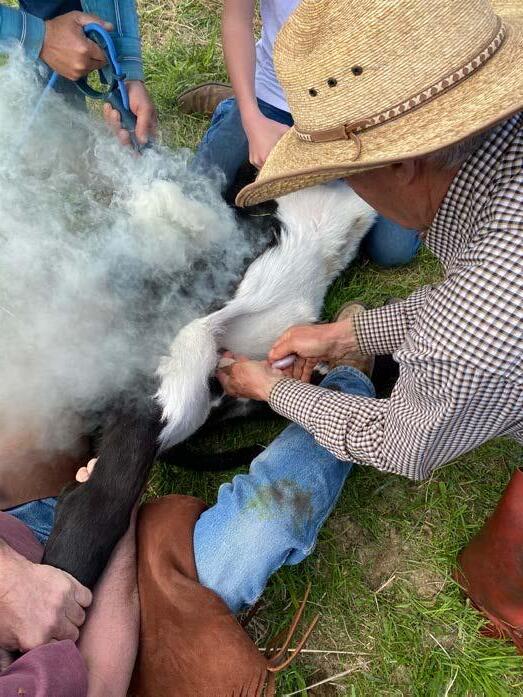
Ensure that tetanus vaccines are current when applying bands to castrate bulls over 440 lbs (180 kg)
Monitor calves after castration (ensure they’re nursing or eating, that there are no signs of infection or abnormal post-surgical bleeding)
Identify and record improperly castrated cattle or those with undescended testicles for appropriate further management
No understanding or awareness of importance of correct procedure, equipment or pain mitigation. Awareness of correct procedures and equipment. Investigating use of pain mitigation and protocol with veterinarian.
Able to articulate protocol, including pain mitigation. Has documentation verifying application of protocol.
Written protocols with veterinarian input as well as documentation verifying application and efficacy of protocol.
Weaning is the process of eliminating milk from a calf’s diet. Most Canadian cattle operations typically wean calves between 5-8 months of age. Weaning is traditionally accomplished by abruptly removing the calf from physical and visual contact with the dam, which places stress on calves.
Fence-line weaning is a variation where calves are separated from their dams and placed in adjacent pen or pasture so that auditory and visual contact is maintained until animals adjust to their new environment. Two-stage weaning first prevents nursing by placing a nose-flap on the calf while still with the cow. In the second stage, the nose flap is removed, and the cow and calf are separated.
Newly weaned calves are at an increased risk for getting sick, in particular when other stressors are added, such as:
Changes of diet
Strange water, feed and surroundings
Co-mingling of cattle at auction markets
Disease risk from unvaccinated animals
Long transportation times
Standing without feed or water
Standing without bedding
Overcrowding in pens
Cow calf producers can enhance survival rates for weaned calves by:
Utilizing low-stress weaning techniques, such as fence-line or two-stage weaning
Pre-vaccinating calves prior to weaning
Introducing new feed and/or water systems to calves while still on the cow
Preconditioning calves by feeding them for at least 30 days after weaning and prior to shipping to auction market or feedlot
Ensuring calves have access to feed and water upon arrival, or within a few hours
Bedding arrival pens so calves can lay down Implementing a calf management protocol based on risk factors (i.e.: auction mart sourced, ranch direct, long haul, size, or breed)
Purchasing preconditioned and/or pre-immunized calves
Cow-calf: Inadequate feed and water available to newly weaned calves and/or high death loss of calves (proof required to support).
Feedlot: No herd health management considerations for freshly weaned calves.
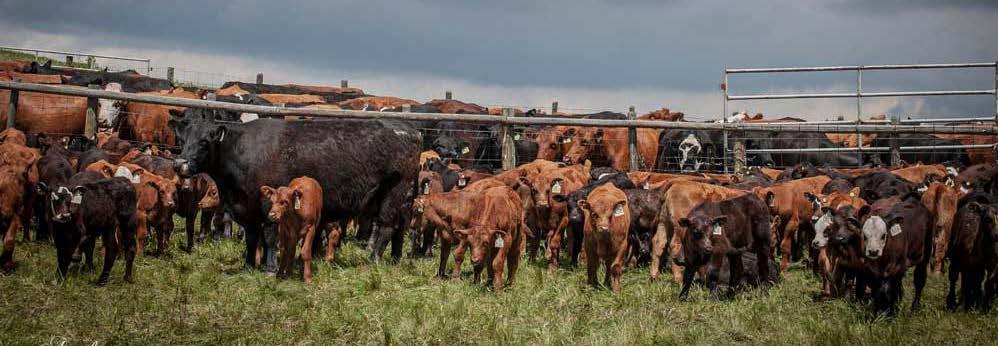
Cow-calf: Awareness of ways to improve weaning practices; has a herd health program developed with veterinarian.
Feedlot: On-arrival antibiotics used for all calves; awareness of ways to reduce stress and improve outcomes.
Cow-calf: Weaning methods are low stress, introduced to feed while on cow, pre-vaccinated.
Feedlot: Purchases calves with minimal comingling; uses a risk-based protocol for calf management.
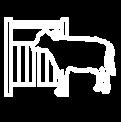
Feedlot operators can enhance survival rates for weaned calves by: 0 1 2 3
Cow-calf: Operation preconditions calves based on veterinarian input.
Feedlot: Operation prefers to purchase preconditioned, non-commingled calves; avoids any undue stress-related procedures until calves are weaned.
Beef Cattle
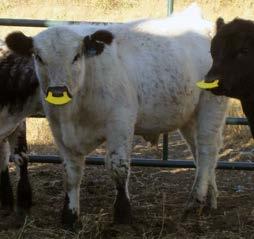
Council

Predation of livestock by wild or feral animals can have a serious impact on cattle welfare, causing stress, injury or death. Producers should be aware of predation risks in their area so that they may better design and implement control measures.
Predator control should not bring additional risk to the livestock being protected, such as potential exposure to poison or traps. Be familiar with provincial regulations. Producers should be aware of and familiar with provincial regulations related to predator and nuisance animal control and livestock.
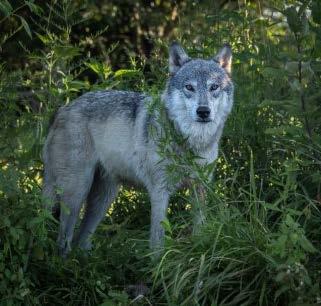
WEANING INFORMATION
https://www.beefresearch.ca/research-topic.cfm/weaning-65

https://www.beefresearch.ca/research/preconditioning.cfm
Beef Cattle Research Council www.beefresearch.ca
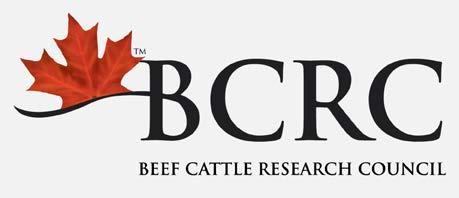
Tail docking is not a common practice in the beef cattle industry, though it is occasionally done to prevent tail injury and infection when cattle are housed in high-density, slatted floor barns.
The procedure must only be done by a trained person upon the advice of a veterinarian, with proper consideration for pain mitigation. New facilities should be designed to prevent tail injury.
Research
has many decision making tools to assist producers in determining economic benefit.Photo credit: Beef Cattle Research Council


Every cattle operation will have unique housing facilities, depending on type of production (cowcalf, backgrounder, or feedlot), type of land, local climate, and provincial or municipal regulatory requirements. Producers must have access to adequate land and facilities to meet nutritional needs and allow cattle to exhibit normal behavior at every stage of life, during every season. Cattle also require the ability to move freely to access feed and water, and sufficient space for all animals in a group to lay down at the same time.

Stocking density refers to number of head per acre or pen space per animal. Although there are rules of thumb for calculating stocking density, beware that the stocking rates vary according to environmental conditions, season, management system, and animal type. For example, environmental conditions affect stocking densities on pasture (think drought and reduced forage availability). Depending on whether the land is carrying cow-calf pairs or yearlings, animal units per acre can vary. In general, confined feeding systems can stock a greater number of cattle per area than a pasture based system.
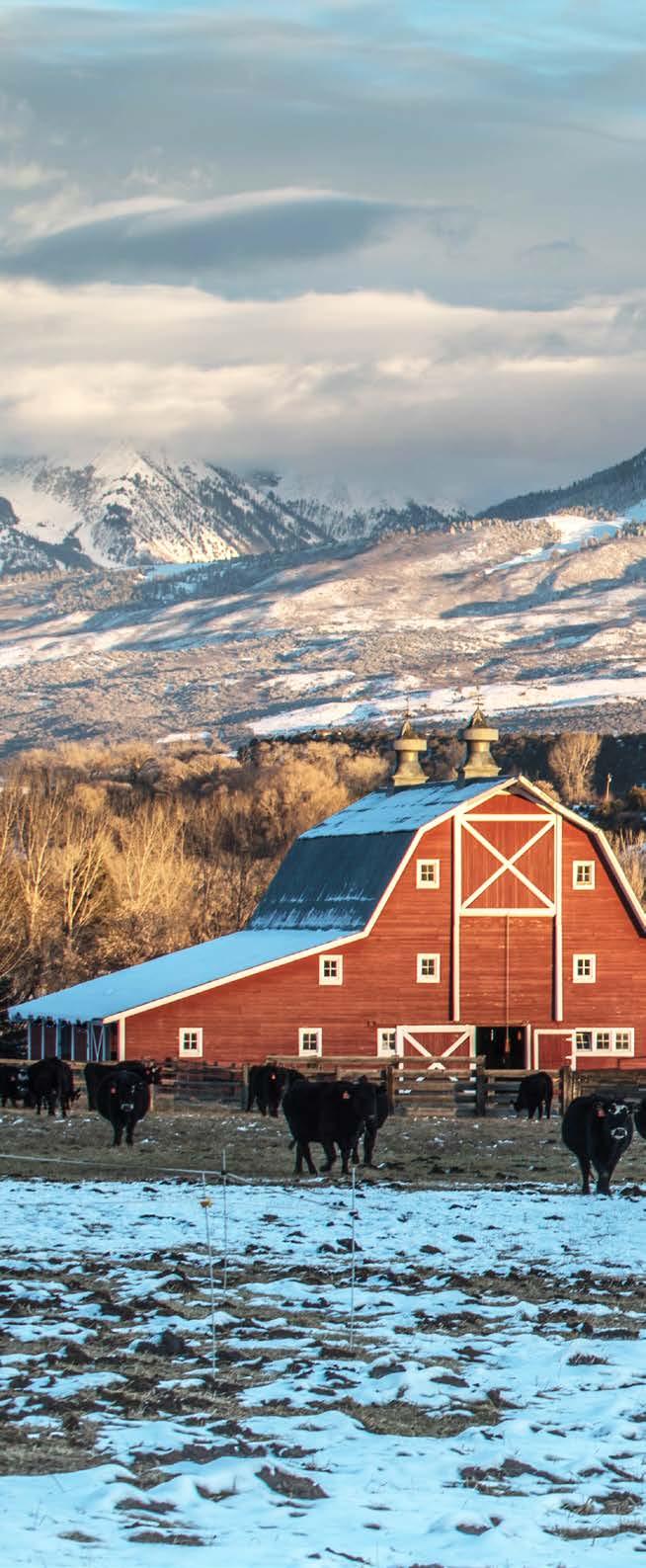
Most beef cattle in Canada are raised outside year-round, either on pasture/range or in a feedlot pen. When managed in herds that allow expression of normal behaviours and sufficient access to feed and water, cattle tend to be healthier and more likely to achieve optimum growth and reproductive performance.
However, extreme weather conditions (i.e.: cold, floods, storms, heat waves, etc.) can adversely affect the well-being of cattle—or even threaten animal life. The ability to cope with sudden changes in weather or adverse weather conditions varies due to factors such as:
Age (i.e. newborn calves are less resilient)
Body condition score
Access to feed, water and shelter
Degree of acclimation (i.e.: winter hair coat)
Health status
Stress (i.e.: newly arrived feedlot cattle)
Adequate shelter for cattle should be provided according to the conditions they face. Treed areas, coulees, windbreak fences, and calf sheds are just some examples of shelters that can protect animals from wind, precipitation, and sun.
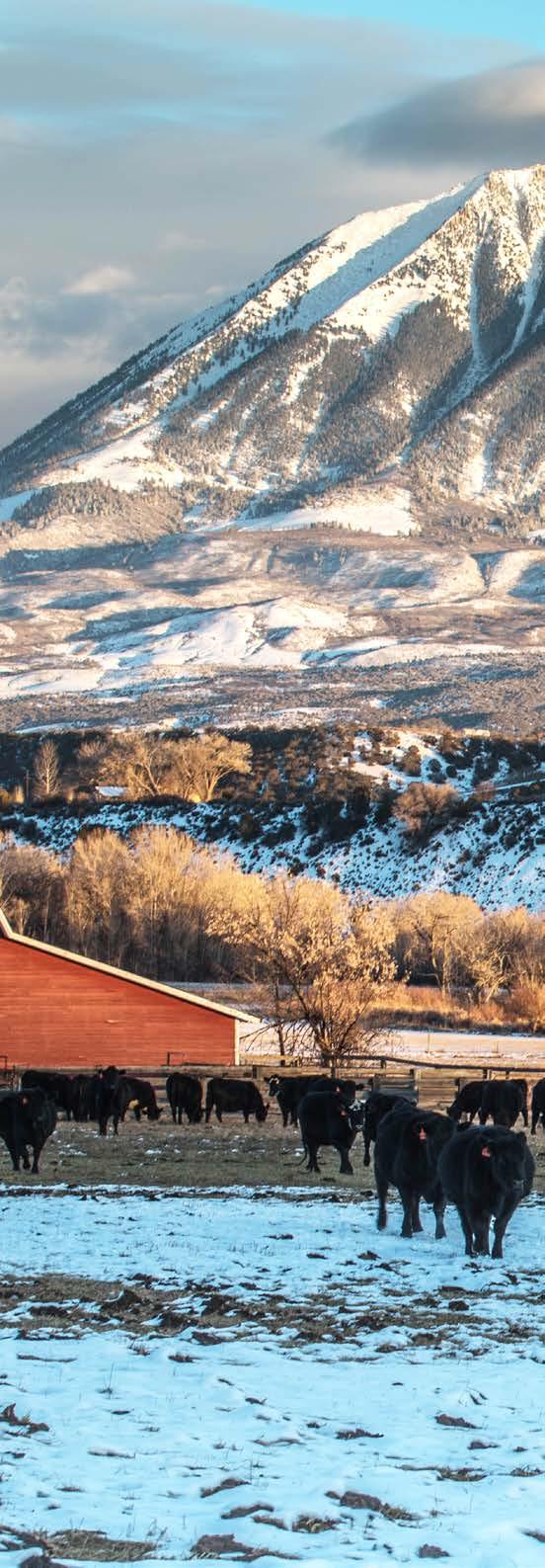
If an animal is not coping well with extreme weather, they must be assisted. Depending on the circumstance, this could mean providing additional feed, bedding, or shelter. Removal from the herd to receive specialized care may be necessary.
Cattle can generally tolerate colder temperatures if acclimatized. However, cattle that are wet (especially newborn calves), in poor body condition, or fed inadequate energy are less able to cope with extreme cold.
Producers should provide shelter from the elements in the form of wind fences, sheds, trees, etc. Additional feed resources are required during cold weather, as is bedding to insulate against the bare ground and reduce mud/manure build-up on hides.
Signs that cattle are suffering from hypothermia (extreme cold) are:
Shivering
Low core body temperature (less than 35C or 96F)

Cold mouth
Inability to get up
No sucking reflex in calves
Frostbite (especially newborn calves)
Cattle generally find it more difficult to tolerate high temperatures than low temperatures. Extreme heat and humidity adversely affect feed intake, weight gain, reproductive efficiency and milk production. Severe heat stress can lead to illness and death.
When combined temperature and humidity exceed a Humidex value of 40, cattle are at risk of heat stress. Factors such as shade, air movement and length of exposure can influence the impact of heat stress. Water requirements are also greater during hot weather.

Signs of heat stress include:
Open mouth panting with tongue protruiding
Laboured breathing
Drooling or froth around the mouth
When cattle are showing signs of heat stress, the NFACC Code of Practice recommends the following strategies:
Provide shade
Avoid handling cattle
Feed cattle at dusk or dawn
Moisten the ground in part of the pen
Sprinkle cattle with water
In Western Canada, beef cattle are infrequently housed indoors and usually only for short periods of time. Cows close to calving will often be provided shelter indoors when the weather is either too cold or wet for them to calve on pasture. In Eastern Canada, some feedlots utilize specialized barns to protect animals from extreme heat and humidity. Cattle that are sick or quarantined may need to be housed indoors to isolate them from the rest of herd and provide specialized shelter and care.
It is important that animals housed in confined areas, whether inside or outside, stay as dry and clean as possible. Wet, muddy, or overcrowded living conditions can lead to illness, disease transfer, and animal discomfort. Building and pen design should allow for removal of manure and waste, as well as offering protection from the elements and access to feed and water.
For barns, maintain indoor air quality and ventilation at all times (ammonia levels<25ppm). Cattle housed indoors without access to natural light must be provided with supplementary lighting to allow normal behaviour patterns and animal inspection.
Facilities include all locations that are important to the wellbeing of cattle and their caregivers, such as barns, shelters (man-made or natural), pasture, pens, waterers, bedding areas, feeders, fences, wind-fencing, trees, etc.
All facilities used in cattle production, including pasture/range, should be regularly inspected and maintained. Shelters, fences, waterers, feeders, etc. should be in good repair. Handling systems that provide access to shelters and barns should also be constructed in such a way that movement of cattle into, out of, and within the facility is safe for both people and cattle.
Pens should be cleaned regularly and may need to be graded periodically to ensure proper drainage. Manure should be removed from feedlot pens at least annually, as accumulation poses a risk to food safety, biosecurity, animal health, and welfare. Tag (dried manure encrusted onto the hide) may harbour harmful pathogens and debris that can contaminate beef, resulting in economic losses for producers and processors.
Reduce the incidence of tag on hides by keeping cattle areas clean, dry, and providing abundant bedding. In keeping with food safety awareness, check that bedding products (especially wood chips) are free of chemicals that could lead to potential residues in cattle.
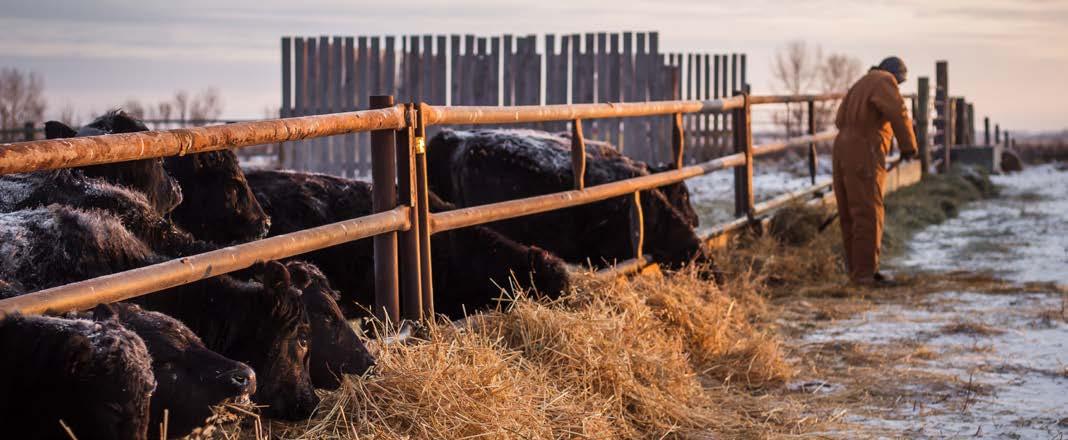
Livestock producers can assess the suitability of their housing facilities by tracking herd performance metrics, such as morbidity and mortality rates and lameness and injury incidents. Observing cattle behaviour, physical appearance, and performance (i.e.: average daily gain, feed intake) can also provide insight on facility adequacy.
The NFACC Code of Practice recommends the following:
Ensure that all cattle facilities are safe and free of hazards that can cause injury
Provide a separate area with dry bedding for the recovery of severely sick or injured animals
Consider biosecurity measures when designing and managing cattle facilities
Ensure restraint devices are used correctly (excessive pressure can cause cattle to panic)
Provide daily exercise for any cattle that are tethered (tethers must be safe and allow the animal to stand or lie down)
Unaware of the importance of shelter facilities to meet cattle requirements.
Awareness of importance of planning for shelter or facilities that meet cattle requirements. Able to describe shelter needs of cattle in production model.
Able to describe shelter/facility needs of cattle in production model, has records to demonstrate needs of cattle are being met (eg. production or health records).
Protocol for criteria to assess shelter or facility needs for operation’s production model. Can produce records to show assessment and validation of criteria of protocol.

Calving season is one of the most labor-intensive times on a cow calf operation, and attention to detail is crucial to minimize mortalities. Workers are often exhausted from providing round-the-clock monitoring, which is necessary to provide prompt assistance if difficulty arises pre- or postcalving.
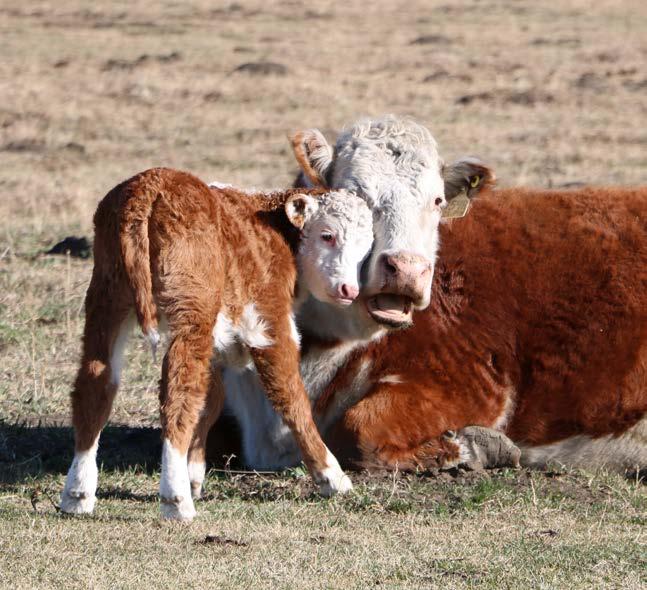
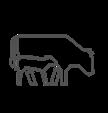
Producers are encouraged to devise a Calving Management Plan that would include information for employees on how to recognize a potential calving problem, what to do in the event of an issue, who to contact in an emergency, and location of calving supplies.


FACILITIES FOR CALVING COWS
MONITORING CALVING COWS & CALVES
COLOSTRUM MANAGEMENT


CALVING DIFFICULTIES
PREVENTING HEIFER PREGNANCY AND PREGNANT HEIFERS IN THE FEEDLOT
Most cow-calf producers plan their calving season for a 2-3 month period in early to late spring. Beef cows typically calve outside and producers should provide an environment that is safe, clean, and promotes calf survival. If calving occurs during periods of extreme wet or cold weather, sheltered and bedded calving areas (natural or constructed) can protect the cow and calf. Cows typically separate themselves from the herd as calving approaches. Isolating a calving cow or cow-calf pair in an individual pen is helpful if intervention is required.
Newborn calves are susceptible to disease, so calving facilities should be designed and maintained to minimize disease transmission. In particular, calf scours can contaminate confined calving areas. The risk of scours is reduced my maintaining dry conditions and preventing contact with infected cattle.
The NFACC Code of Practice recommends the following:

Keep calving areas free of cattle until just prior to calving, to minimize manure and help reduce calf diseases
If calving indoors, be prepared to separate calving cows and heifers into pens with adequate bedding
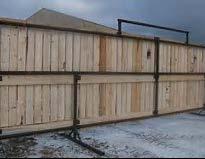
Strive to minimize young calves’ contact with manure, recognizing that calving areas become increasingly contaminated as the calving season progresses
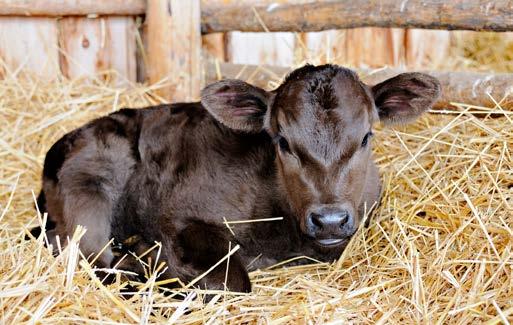
The majority of beef cows calve without assistance. However, careful monitoring of calving cows ensures that help can be provided in a timely fashion when needed. Knowing when and how to provide calving assistance is an important management skill that will protect both the cow and calf in the event of problems.
STAGE 1
o Lasts 3 - 72 hours
o Pelvic ligaments relax
o Cervical mucous plug released
o Cow is restless and may separate from herd

o Tail elevated
o Sniffs ground, may turn head towards flank
o May begin straining
STAGE 2
o Begins with appearance of water bag
o Ends with expulsion of calf
o Should last 30 minutes to 3 hours
STAGE 3
o Expulsion of placenta
o Usually expelled 8 - 12 hours after birth
Most newborn calves are able to get up on their own and suckle the dam. If the calf is having difficulty or is in distress, be prepared to assist. A veterinarian or someone with calving experience can help assess the situation and recommend actions to promote the well-being of both calf and dam. It is vital that the newborn calf consume colostrum (the first milk produced by the cow) within a few hours of birth.
Born without maternal antibodies, a newborn calf must receive colostrum to acquire passive immunity. A calf’s ability to absorb colostrum is substantially reduced 6-8 hours after birth, making it crucial that a calf nurse or be hand-fed colostrum within its first few hours.
The ability of the calf to defend itself against infectious diseases throughout its lifetime is directly related to the amount, quality, and timing of colostrum intake. Inadequate colostrum results in low blood concentrations of immunoglobulin. This condition (known as “failure of passive transfer”) makes calves 1.6 times more likely to become sick and 2.7 times more likely to die before weaning. (Source: NFACC Beef Cattle Code of Practice)
Difficult births, mis-mothering, poor udder conformation, and hypothermia can all affect the ability of calves to suckle. In these situations, producers should assume that the calf has not nursed on its own and administer colostrum. Colostrum should be given to any calf suspected of not suckling their dam.
Signs that a calf may not have received adequate colostrum include:
Weak or lethargic

Lack of suckling reflex
Cold mouth
Gaunt appearance
Dam has a full udder
Colostrum may be collected from cows within the herd or a commercial colostrum substitute may be acquired through your veterinarian or feed supply store.
Administer two litres of colostrum to calves that have not suckled within six hours of birth. In cold weather, intervene earlier to supplement calves.
Learn how to safely use an esophageal (tube) feeder, as it may assist in administering colostrum to calves that will not suckle.

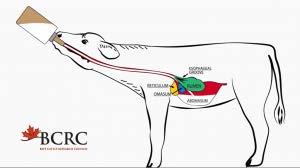
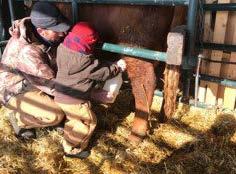
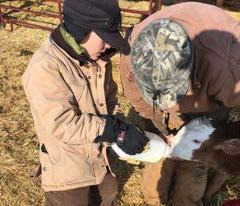
Obtain supplemental colostrum from any of these sources: milked from the calf’s dam, pooled colostrum from other cows in the herd, or commercial colostrum substitute. For biosecurity reasons, avoid using dairy cow colostrum.
Credit: BCRC – beefresearch.ca
Producers should learn to recognize the signs of calving difficulty and distress, as well as techniques to safely aid in the delivery of a live calf. A veterinarian or experienced cattleperson may be a great resource. Equally important is the ability to recognize when professional help is needed.
C-sections must be done by a veterinarian or qualified, trained personnel using accepted surgical techniques and appropriate pain control during and after the procedure. This includes local anesthesia and post-operative pain medications.
To learn more about how to assist calving cows, including common post-calving complications, refer to the NFACC Code of Practice Appendix C – Calving: How and When to Help.
Plan a breeding period to assist in implementing other herd management practices, such as vaccination and nutrition programs.
Select sires carefully on the basis of predicted calving ease or the bull’s birth weight. Sire selection should also take into account the breed, size, age, and previous calving record of the females.
Time the first breeding of heifers to their overall physical development. It is recommended that heifers be at least two-thirds of estimated mature body weight at first breeding, and 85% of mature body weight by calving.
Ensure that cows and heifers are in suitable body condition at the time of calving; a suggested target is BCS 3 for heifers and 2.5 for cows.
Ensure proper use of equipment designed for pulling calves.
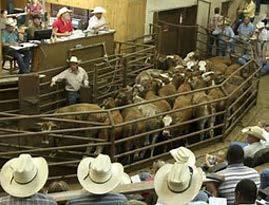
Very young or small heifers that become pregnant are at greater risk of traumatic calving that can result in death for both mother and calf. Producers should employ management systems to avoid unwanted heifer pregnancies, such as separating heifer calves from bulls and bull calves.
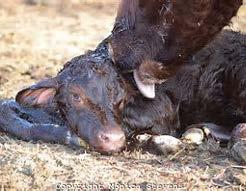
On occasion, pregnant heifers may end up in the feedlot. The feedlot environment is not always well-suited to deal with calving, and can result in significant animal welfare problems. In consultation with their veterinarian, some feedlot operators may choose to terminate unintended pregnancies. If a feedlot operation chooses to calve out pregnant heifers, it is necessary that they have the facilities and expertise to care for both dams and calves.
Some producers may choose to have heifers spayed, which is an invasive procedure to remove the ovaries. Although not common, this procedure must only be done by a veterinarian or qualified and trained personnel using adequate pain control.


Production model does not include regular assessment of calving animal, but incorporates a protocol (i.e. low birth weight bulls, warm weather calving season) to mitigate risk of calving difficulties.
Articulates plan or protocol for monitoring calving livestock. Has records to verify response.
Written protocol for monitoring calving livestock, including training of personnel. Has records to verify monitoring activities and responses.